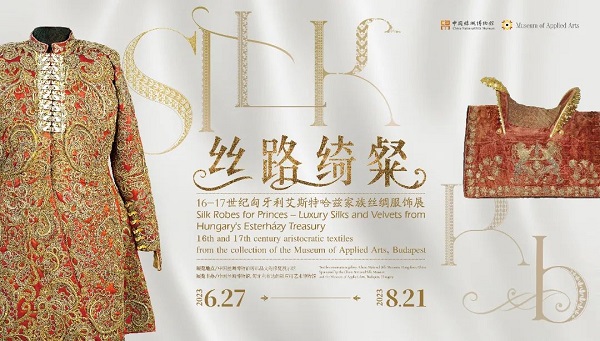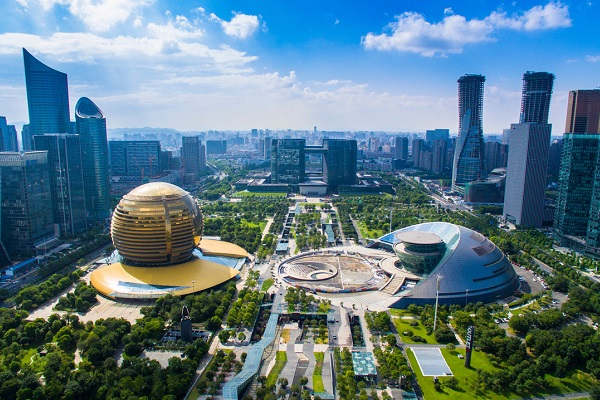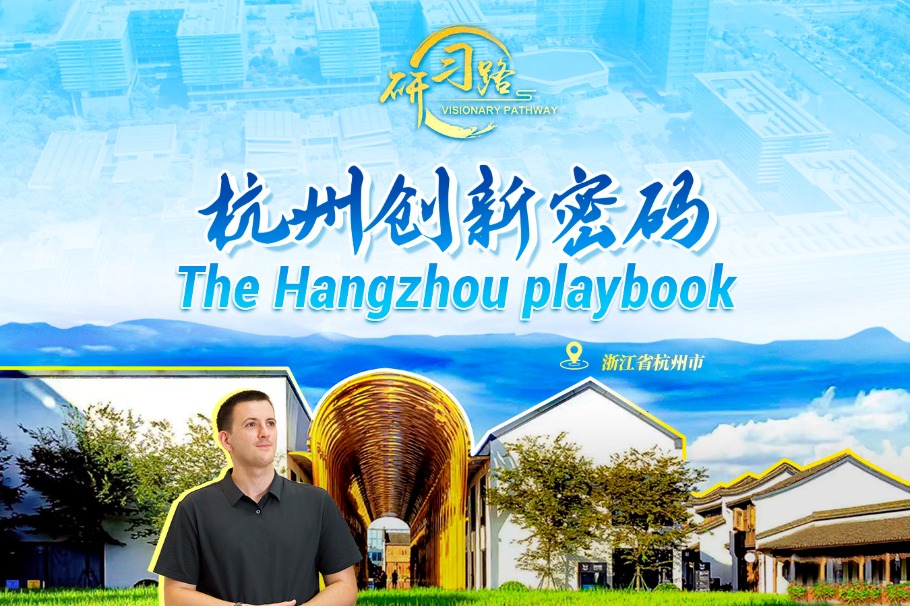Ancient artifacts show historical lifestyles of Hungarian people

[Photo/WeChat account: cnsilkmuseum]
Featuring 34 pieces of Hungarian artifacts in 16th and 17th centuries that have never been shown in China before, an art exhibition organized by Hungary's Museum of Applied Arts and the China National Silk Museum (CNSM) recently opened in Hangzhou, East China's Zhejiang Province.
The art show portrays the affluent lifestyle of Hungary's aristocratic House of Esterhazy through curated sections such as "men's clothing" and "household goods." Silk garments, luxury bedspreads and canes with inlaid jewels are all on exhibit so visitors may learn more about Hungary's unique textile aesthetics and Hungarian people's historical cultural lifestyles.
The show, which is insured for around 200 million yuan ($27.6 million), is crowned with a stellar item that has never been displayed outside of Hungary - a silk wall hanging from the Safavid Dynasty depicting a court gala hosted by the sovereign of the time.
In 2003, this treasure originally made in northwestern Iran's Tabriz, was restored. Cultural sociologist Chu Xin told the Global Times that Chinese audiences may be not familiar the story behind the artifact, the "silk craze" was "globally shared in the past."
"Not only Hungary, other Western countries like Italy and France have had a longstanding appreciation of this Chinese invention," Chu noted, adding that silk allowed the known world to see China's creative power before they even knew where the country was on a map.
The exhibition was launched in hope of deepening "cultural cooperation between China and Hungary," said Anna Bognar, the head of the Department for International Affairs at the Museum of Applied Arts.
The exhibition, which will last until August 21, is one of the major events for the upcoming 2023 Silk Road Week that will debut on July 12.
"The Silk Roads: Long Roads and Mutual Goals" is the 2023 event's theme. Debuting at the China National Silk Museum in 2020, the event aims to disseminate information and knowledge about the Silk Road and facilitate academic research.
Hungary, the first European country to join the Belt and Road Initiative, is the Guest Country of Honor of the event this year.
Along with the Hangzhou show, another exhibition showcasing China's silk history and techniques will be held in Budapest, the capital of Hungary in October.
"It is hoped that the Silk Road Week can truly serve as a platform for sharing, dialogue and exchanges," Ji Xiaofen, the director of CNSM remarked.
The Silk Road Week was first inspired by the Chang'an-Tianshan Silk Road Corridor becoming a UNESCO World Heritage on June 22, 2014. Since its 2020 debut, UNESCO has given the event its support. More than 200 cultural organizations and institutions from around the world participate in the event.
"Though the ancient Silk Road is now part of history, its spirit of binding countries and people together has been extended to the present through means such as the Belt and Road Initiative," Wang Xingkun, an expert in BRI's cultural influence, told the Global Times.
"Cultural exchanges always improve connectivity between people," said Bognar.
-
Visionary Pathway - Hangzhou Playbook
July 15, 2025



